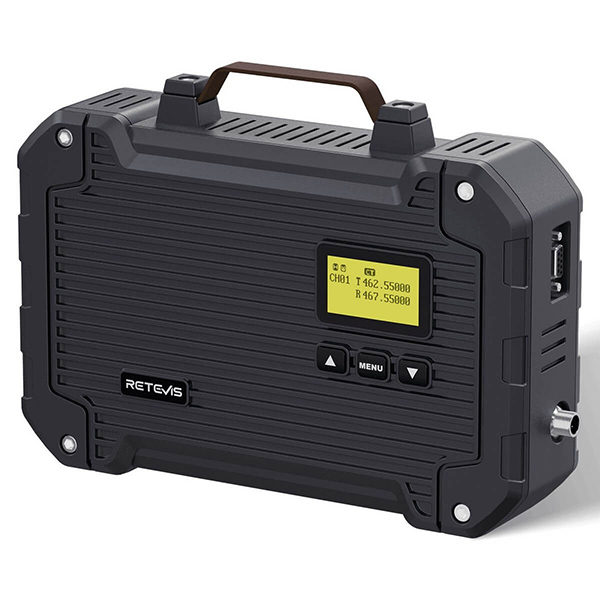GMRS Repeater Radio Protocols for Group Adventures

GMRS Repeater Radio Protocols for Group Adventures
Essential Communication Standards for Outdoor Groups
When venturing into remote areas with your adventure team, establishing proper GMRS repeater radio protocols ensures smooth, efficient communication that could prove vital in emergencies. The RT97L GMRS repeater radio (25W, IP66 waterproof) serves as an ideal backbone for group communications, offering reliable performance in challenging outdoor conditions. These carefully designed protocols will help your group maximize the potential of your 25-watt GMRS repeater radio while maintaining order on the airwaves.
With its IP66 waterproof rating, the RT97L withstands the elements during mountain treks, river expeditions, or desert crossings, while its 25-watt transmitter provides the power needed to keep your team connected across varied terrain. Implementing these communication standards will transform your group's outdoor experience from potentially chaotic to perfectly coordinated.
Establishing Core Communication Protocols
Channel Allocation Strategy
-
Primary Operations Channel: Designate one main channel for routine communications
-
Emergency Channel: Reserve a separate frequency (GMRS 16) exclusively for urgent situations
-
Private Channels: Assign additional frequencies for subgroup communications
-
Scanning Protocol: Program all radios to monitor the emergency channel continuously
Transmission Etiquette
-
Call Sign System: Create unique identifiers for each team member/group
-
Message Discipline: Use standardized formats for clear communication
-
Priority System: Establish message urgency levels (routine/important/emergency)
-
Listening Pause: Maintain 2-3 seconds of silence between transmissions
Optimizing RT97L Repeater Performance
Power Management
-
Battery Conservation: Implement scheduled communication windows
-
Solar Integration: Utilize portable panels for extended expeditions
-
Power Monitoring: Assign a team member to track energy levels
-
Backup Solutions: Carry spare batteries for multi-day trips
Antenna Configuration
-
Elevated Placement: Mount the IP66 waterproof RT97L on high ground
-
Directional Options: Use yagi antennas for point-to-point communication
-
Portable Setups: Implement foldable antennas for mobile operations
-
Signal Testing: Conduct range checks at each new location
Weather Monitoring
-
NOAA Integration: Program weather channels in all radios
-
Alert System: Designate a weather monitoring officer
-
Evacuation Signals: Create distinct codes for weather emergencies
-
Condition Reporting: Standardize environmental updates
Group Size Considerations
Small Teams (2-4 People)
-
Simplified channel structure
-
Direct communication without relays
-
Shared monitoring responsibilities
-
Basic emergency protocols
Medium Groups (5-10 People)
-
Subgroup channel assignments
-
Designated radio operators
-
Scheduled check-in times
-
Message relay system
Large Expeditions (10+ People)
-
Hierarchical communication structure
-
Dedicated net control station
-
Formal message logging
-
Multiple repeater deployment

- RT97L GMRS Repeater Radio
Training and Preparedness
Pre-Trip Preparation
-
Equipment Testing: Verify all GMRS repeater radios before departure
-
Channel Programming: Ensure consistency across all devices
-
Practice Drills: Conduct simulated emergency scenarios
-
Documentation: Provide printed protocol references
Skill Development
-
Phonetic Alphabet: Standardize for clarity
-
Terrain Awareness: Teach signal propagation principles
-
Battery Management: Train in power conservation
-
Troubleshooting: Cover common issues and solutions
RT97L-Specific Advantages
Durability Features
-
IP66 waterproof casing for all-weather reliability
-
Shock-resistant construction for rough terrain
-
Temperature tolerance for extreme environments
-
Corrosion protection for marine use
Performance Benefits
-
25-watt output for superior range
-
Clear audio quality in windy conditions
-
Easy-to-use interface for quick adoption
-
Repeater functionality for expanded coverage
Conclusion: Adventure with Confidence
Implementing these GMRS repeater radio protocols with your RT97L (25W, IP66 waterproof) system will transform your group's outdoor experience. By establishing clear communication standards, you'll enjoy:
Enhanced safety through reliable contact
Improved coordination during activities
Faster emergency response capability
Reduced radio interference and confusion
Longer operational periods through proper power management
Equip your next adventure with both the right technology and the proper protocols for success.






